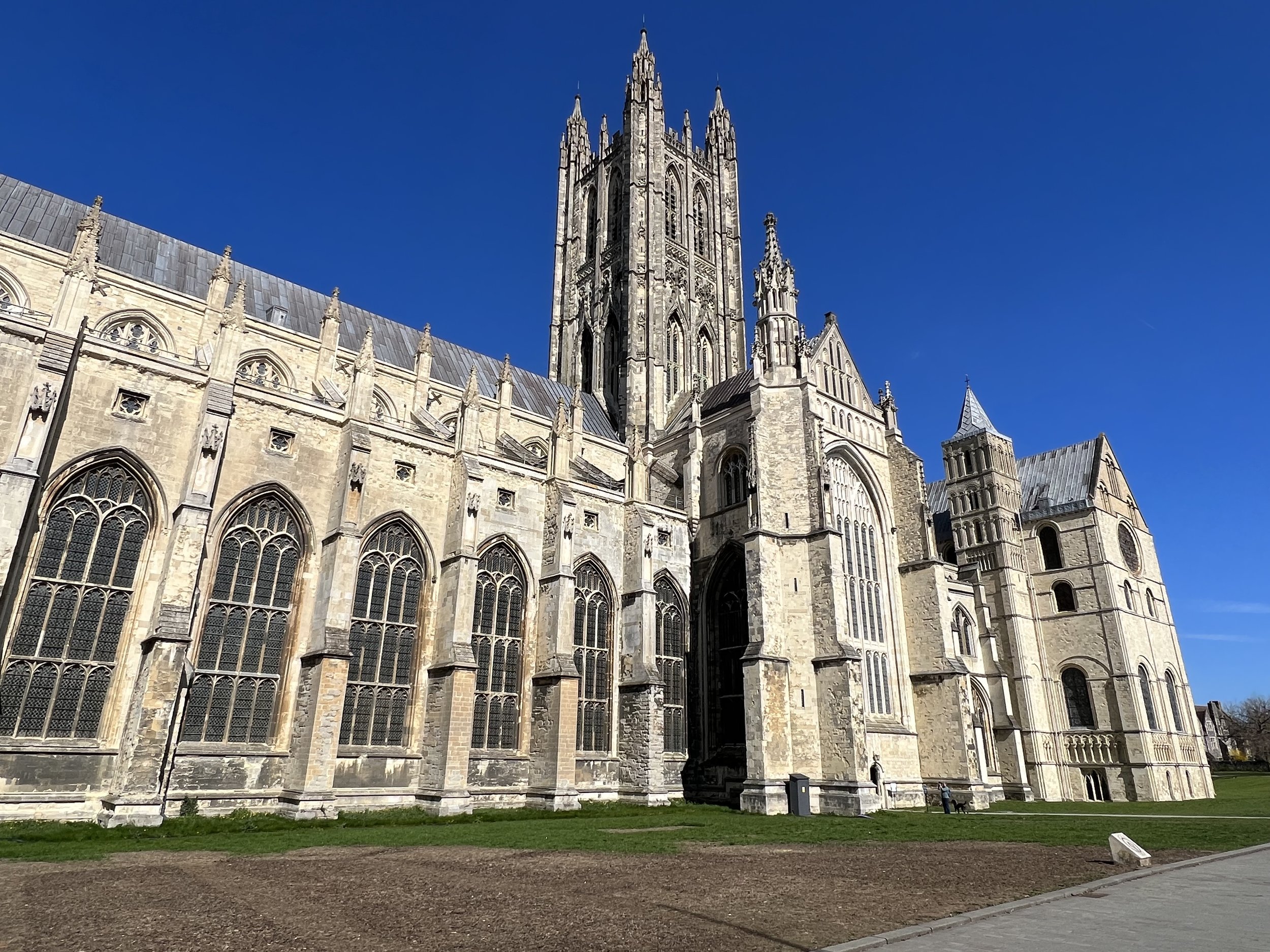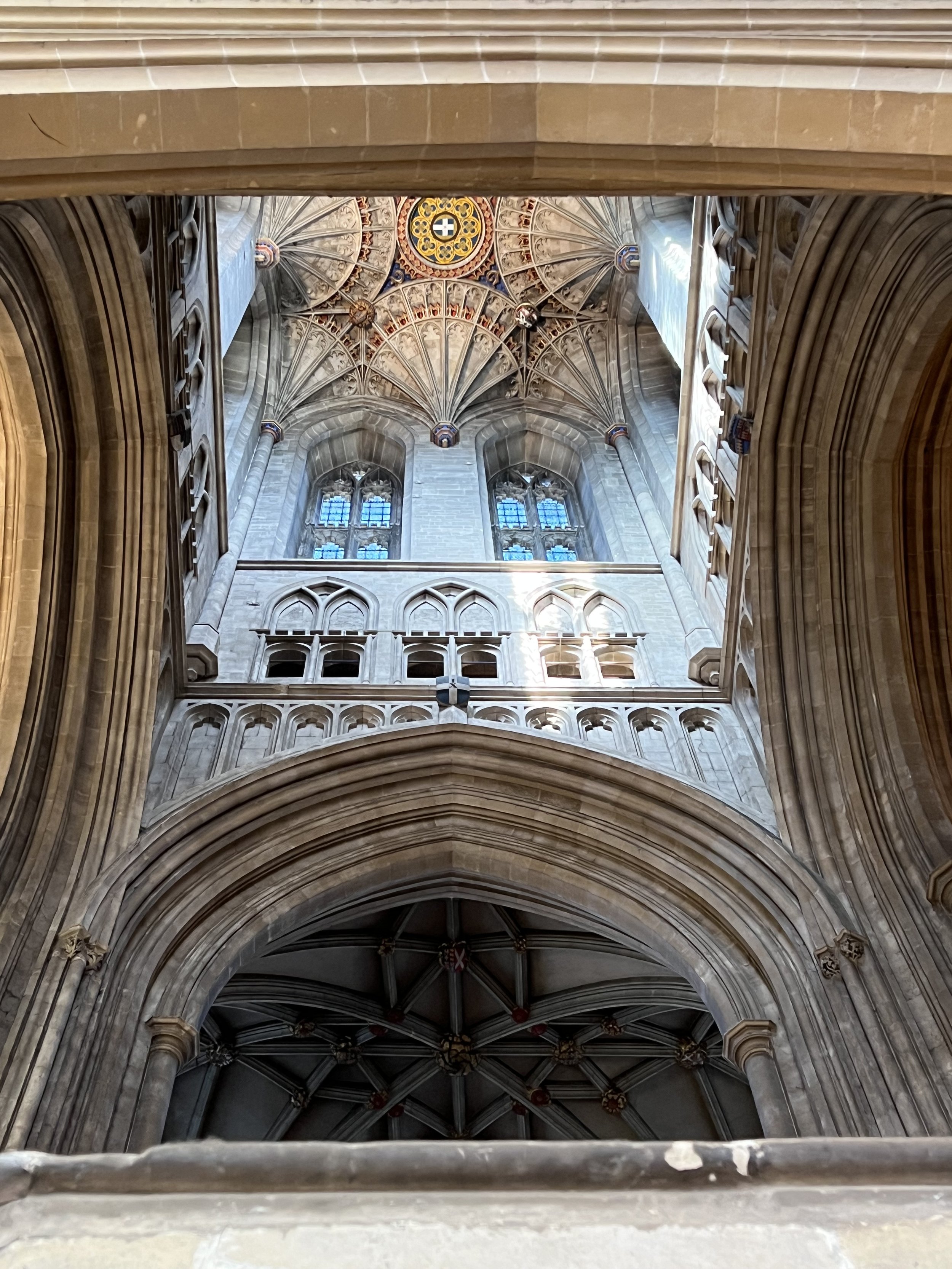Sailing through History.
Powering out of St Katharines lock.
We had lots of help untying the lines and getting us through the lock into the Thames. Thank you to all our London friends, the shared meals and fun evenings tucked into each others boats. It made our stay most memorable.
We leave St Katharines Dock marina on a gloomy Monday morning. The cold mist on the water did not inspire the photographer in us. Besides we had taken all the photos as we had arrived, all excited and eager to explore this magnificent city. Now the mood was more somber as we retraced our steps down the Thames. The mist descended and it was difficult to see the difference between sky and sea. We tuck into Stangate Creek to anchor overnight. Not the most scenic surroundings, but the peace, sunset and then real darkness was most welcome.
The next day we catch the morning ebb tide and pick our way through the shallow sandbanks off the coast of Kent. The sails are raised for the first time in quite awhile – it’s so good to be sailing again! We run into some confused and choppy seas off the easternmost coastline, we later discover this has dislodged 6 months of galley drain gunk and our first few hours in Dover marina has Brian under the sink unblocking the plumbing.
Dover was a good stop for a few days to wait out the contrary winds. We took a lovely walk along the infamous White Cliffs, passing the busy port with many ferries heading to Belgium and France.
Yes, that is a little ladder down to the beach….. see later.
The chalk cliffs are riddled with tunnels. Some were started during the Napoleonic wars, and expanded for use during the second world wars. We learn more about this later when we explore Dover Castle, but for now we were surprised to discover a tunnel on our way down to the beach at the base of the cliffs.
Pretty impressive cliffs.
We let someone else do the driving for a change and take a day trip to France on a ferry. Stocking up with cheese, pate and wine, not a wasted trip. We see Rodin’s Burghers of Calais….. in Calais. The bonus is that Brian’s passport is stamped for another 6 months stay.
Dover Castle dominates the port town of Dover. A fortification has been on the imposing hill since Roman times, along with a lighthouse that still survives. The current castle was started in the 11th century and expanded significantly to most of what is seen today during the reign of Henry II, not for defensive purposes, but to have a grand place to entertain visiting dignitaries.
Those pilings in the marina indicate the huge tidal range here.
The interior of the main keep has been restored recently by British Heritage Foundation and they have done a magnificent job bringing it to life. The reproduction wall hangings, furniture and interiors have been extensively researched. It was surprising to us how colorful it all was, but it was pointed out that it demonstrated the wealth of the Royal Court. The pigments required came from continents away, the Siberian squirrel fur blanket on the Royal bed was also quite an extravagance.
The castle has also been used in recent times as a stronghold and base for military operations, mostly in the protected tunnels deep in the chalk cliffs. Under the castle, campaigns were planned, soldiers billeted and a fully functional hospital operated. The evacuation of Dunkirk, Operation Dynamo, which happened early in World War II was planned and coordinated in these tunnels. The Allies trapped in Belgium and northeast France were rescued by Naval vessels and hundreds of small privately owned watercraft over just a few days. The story is quite remarkable, look it up.
Another sunny day and we took the bus to Canterbury. This ancient city is home to Canterbury Cathedral, the seat of the Anglican Church. The cathedral dominates the skyline of the walled town. The river Stour wanders through the middle. It was very pleasant exploring the back streets.
After a nice lunch and sampling the local brew we head off to the Cathedral.
Canterbury Cathedral.
Founded in 597, the cathedral was built in the 11th century and rebuilt and expanded in 12th century. The expansion was to accommodate the influx of pilgrims arriving to pay homage at the tomb of Thomas Becket, the popular and opinionated archbishop of Canterbury who was murdered, there, possibly on Henry II instructions, in 1170.
The modern sculpture at the site of the assassination was powerful and very well conceived. The two swords, and their shadows representing the four knights who slayed the archbishop. The cloisters, with the carved portraits in the ceiling joists were delightful.
Back in Dover we pass our last day visiting the oldest sea-going vessel in the world. The small town museum displays the bronze age boat that was discovered in 1992 during a road construction project. At over 3,000 years old, it was made of massive planks, held together with a clever arrangement of wedges and twine. The reproduction they made of it had a bit of a leaking problem.
The summer tourists are not yet arriving in Dover and we had the beach to ourselves. However it was time to move on and we leave just before the turn of the tide, to try and catch the ebb as it flows west down the Channel. We did an overnight sail, with the winds right behind and in the mid teens – until they were not. With the Code Zero out, at 1am the wind suddenly increased to 25kt. We had considerable difficulty pulling in the sail, the furling line skipped the furler and wrapped the pennant. We had to lower the sail and put it away to be sorted at a later date. Continuing on with the genoa, we sailed through to the Solent area, north of the Isle of Wight and pulled in to the Beaulieu River that afternoon.
Enjoying the nature in Beaulieu River.
Follow our progress on our tracking page. https://forecast.predictwind.com/tracking/display/SVHelacious/




























































